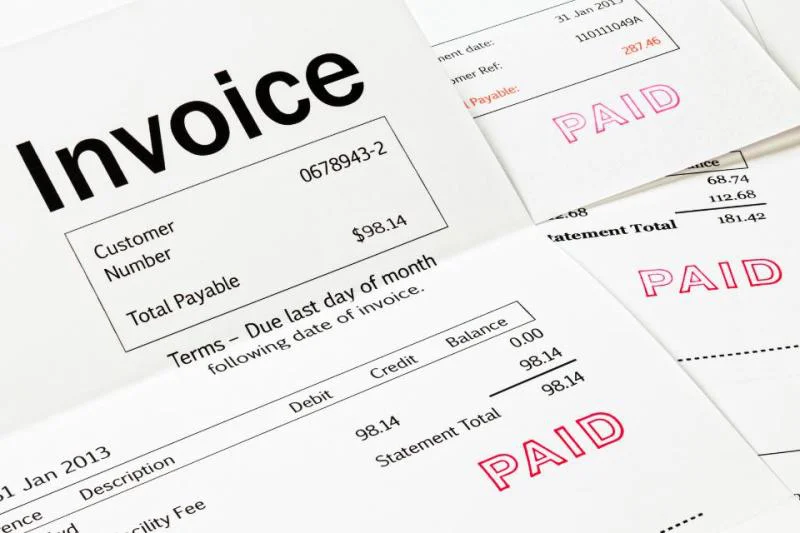Invoices and receipts are essential financial documents but serve different functions in business transactions. An invoice is a payment request from the vendor or service provider to the buyer. It includes information such as the provided products or services description, quantity, unit price, taxes, the total amount due, payment terms, and due date. Before payment is made, the invoice is sent to signify how much the buyer is expected to pay. It is frequently employed to monitor sales, manage customer payments, and account for revenue.
In contrast, a receipt is proof of payment that the vendor provides to the buyer after receiving payment. It functions as proof that a certain amount has been paid for the goods or services specified. Typically, it details the item purchased, the price paid, the payment mechanism, and the transaction date. Purchasers require receipts as proof of purchase which can be used for reimbursement or tax purposes. An invoice is a request for payment, whereas a receipt is an acknowledgment of payment received.
What is an Invoice?
An invoice is an official document sent to a customer by a business, a seller, or a service provider. Its primary purpose is to ask for payment for the products or services that were sold or provided. It acts as a “bill” by listing the transaction details and the total amount the customer is paying the seller. Invoices usually include the names and addresses of the seller and the buyer, a unique invoice number, the date the invoice was sent, a description of the goods or services provided, quantities, unit prices, any discounts or taxes that were applied, the total amount due, and the payment terms, including the due date and the preferred method of payment.
Invoices are essential for keeping track of records and for asking for payment. They help businesses track sales, handle customer payments, and keep good financial records. For the buyer, they give a thorough record of what was bought, which can help with budgeting, keeping track of finances, and filing taxes. Invoices are also crucial legally because they show that the buyer owes the supplier some cash. So, they are essential to how businesses handle their finances and demonstrate accountability.
What is a Receipt?
A receipt is a formal document that shows a product or service has been paid for and delivered. It is proof that a transaction has been finished. The business, store, or service source gives it to the customer after payment. A receipt usually has essential information like the seller’s name and contact information, the transaction date, a list of the goods or services bought, the quantities, individual prices, discounts or taxes, the total amount paid, and the payment method. Some receipts may also have a unique number so they can be tracked or used as a reference.
From the buyer’s point of view, receipts are significant for several reasons. They prove that a transaction took place, help keep track of personal or business spending, back up claims for goods returned or warranty services, and are required for reimbursement or tax benefits. From a business point of view, receipts help keep accurate records, balance financial accounts, do audits, and even settle any possible disagreements about transactions. A receipt is a confirmation that a transaction has been finished. It is a record for both the buyer and the seller.
Difference Between Invoice and Receipt
An invoice is a formal document detailing the services rendered and the total amount due from a vendor to a client. It’s a formal request for funds before the funds are transferred. Invoices facilitate inventory management, client payments, and revenue accounting. However, after payment, the seller issues a receipt to the purchaser. It is a receipt that confirms the date, amount, and type of payment made for a specific purchase. Receipts are required for reimbursement or tax reporting purposes and serve as proof that a purchase was made. The difference between an invoice and a receipt is that the former is issued before the latter is paid. We’ve compared an invoice to a receipt and highlighted the key differences below.
Issuance Timing
An invoice is a request for payment, and a receipt is documentation of a completed transaction that follows an invoice.
Primary Purpose
Invoices are sent to clients to inform them how much they owe for the products or services rendered. A receipt serves as an acknowledgment that a particular payment has been received.
Document Role
Invoices are used to keep track of financial obligations, while receipts represent evidence of payment.
Legal Implication
An invoice establishes a debt obligation, and a receipt validates the payment.
Payment Status
Customers’ financial obligations are shown on invoices, while payments are acknowledged through receipts.
Numbering
Invoices are often assigned a unique number for easy reference and tracking purposes. In contrast, receipts may be assigned a receipt or transaction number or use the original invoice number.
Use in Accounting
Accounts receivable management and revenue tracking relies heavily on invoices. Receipts are essential for handling receivables and accounting for cash received in the business.
Business Functions
Invoices are critical for accounting purposes and budgeting. Receipts are indispensable for auditing, resolving disputes, and validating the truthfulness of transactions.







